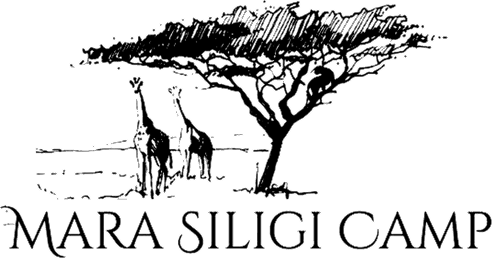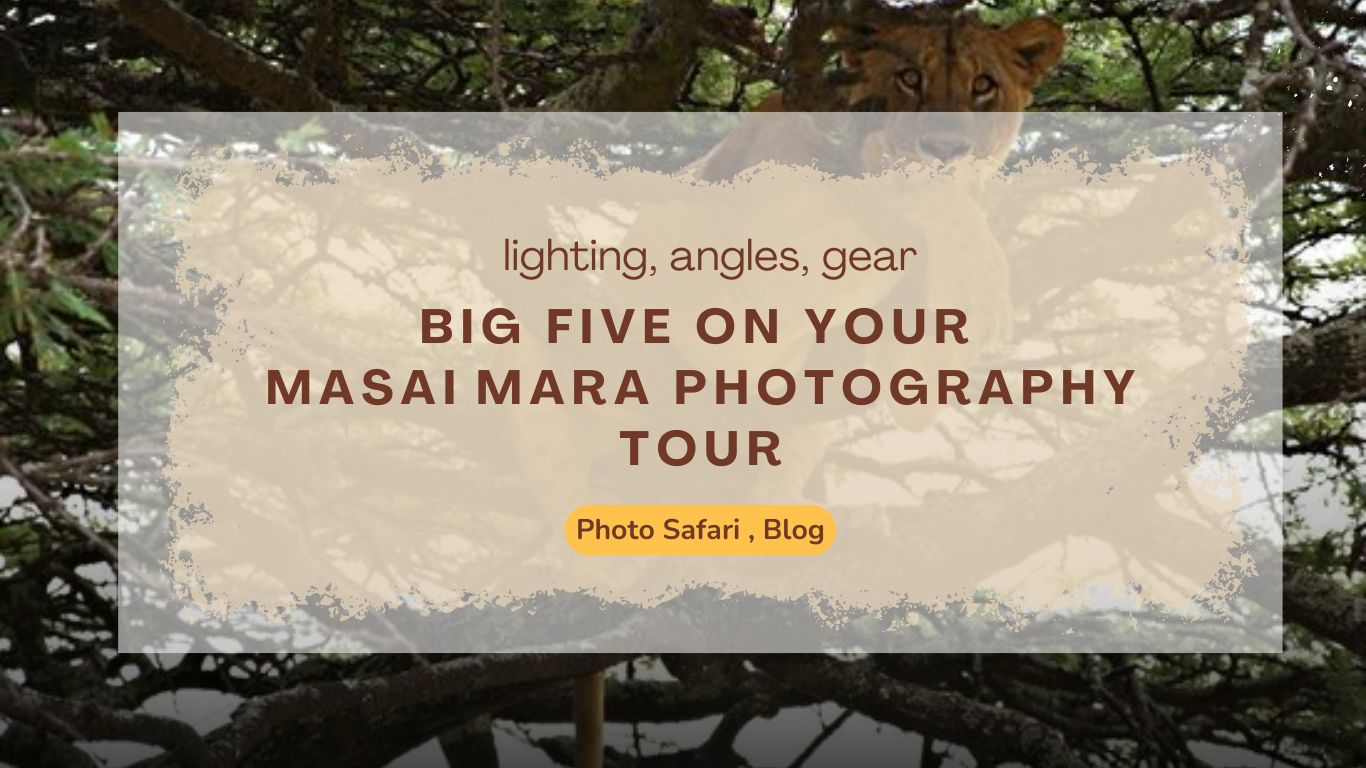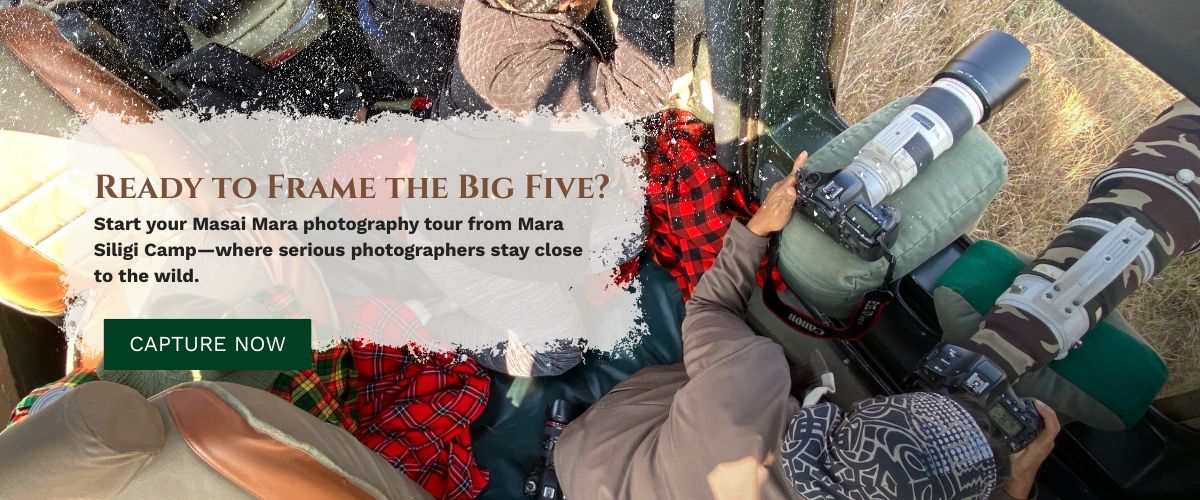If you’ve been dreaming of a Masai Mara photography tour, there’s no bigger thrill than capturing the Big Five—lion, leopard, rhino, elephant, and buffalo—through your lens. These aren’t just bucket-list animals; they are the soul of African wildlife. A big five Masai Mara photography tour challenges your timing, composition, and storytelling. Whether it’s a lion at golden hour or a rhino against the dust-filled plains, every click holds magic—if you know when and how to take the shot. This guide is packed with real, actionable wildlife behavior tips, lighting advice, gear suggestions, and scene-by-scene ideas to help you make the most of your adventure.
And if you’re wondering where to stay? Mara Siligi Camp is a hidden gem—perfect for photographers who want peace, proximity to wildlife, and panoramic views of the wild.
Table of Contents
- Why the Big Five Matter on a Masai Mara Photography Tour
- Understanding Wildlife Behavior: The Key to Great Shots
- Lighting, Angles & Gear Tips
- Lion Photography: Drama at Dawn & Dusk
- Leopard Photography: Camouflage Queens
- Rhino Photography: Majestic and Mysterious
- Elephant Photography: Gentle Giants in Action
- Buffalo Photography: Power and Personality
- Final Takeaway
Why the Big Five Matter on a Masai Mara Photography Tour
Embarking on a Masai Mara photography tour is more than just snapping pictures—it’s a once-in-a-lifetime pursuit of Africa’s most iconic wildlife. Capturing all members of the Big Five—lion, leopard, rhino, elephant, and buffalo—adds depth, storytelling, and challenge to your portfolio. Each of these animals brings a different mood to your lens: the raw power of lions, the elusive elegance of leopards, the ancient strength of rhinos, the gentle presence of elephants, and the unpredictable nature of buffalo.
Photographing them successfully requires more than just the right lens. You’ll need patience, understanding of wildlife behavior, and the guidance of an expert team—like those at Mara Siligi Camp, who offer insider knowledge and optimal positioning for every sighting. Whether you’re on a guided drive or waiting quietly by a waterhole, the right Masai Mara photography tour packages make all the difference.
This goal-driven adventure doesn’t just test your technical skills—it awakens your instincts, teaches timing, and rewards you with stories in every frame. And when the Big Five come together in your gallery? That’s when your safari becomes unforgettable.
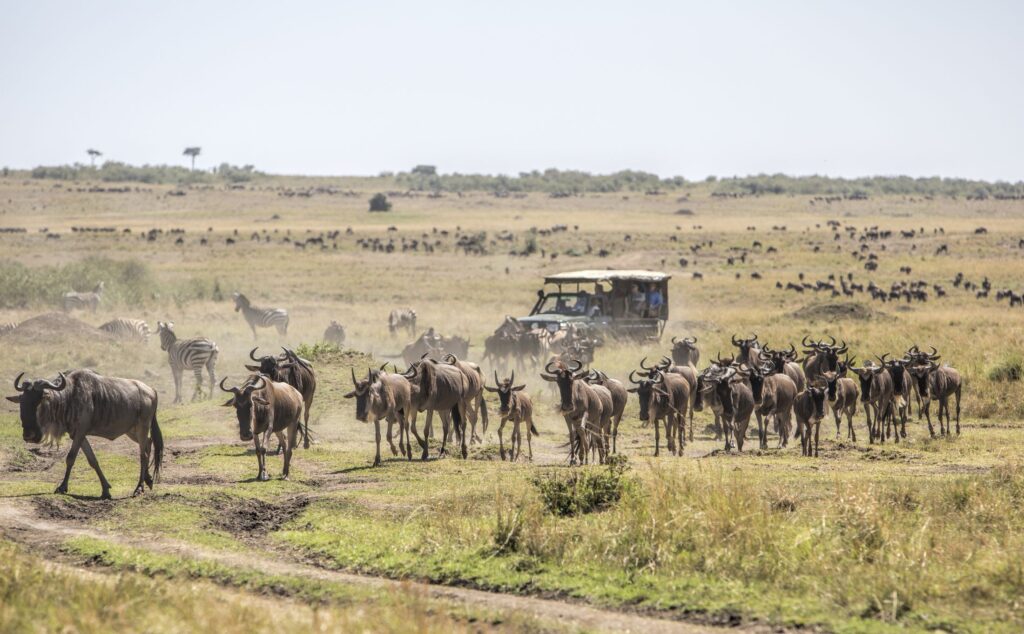
Understanding Wildlife Behavior: The Key to Great Shots
Before you even lift your camera, take a moment to just watch. On a Masai Mara photography tour, understanding animal behavior is what separates a good photo from a breathtaking one. It’s not just about clicking when you see the Big Five—it’s about knowing when and why they do what they do, so you can anticipate the moment before it happens.
- Movement patterns: Lions are most active during dawn and dusk—prime time for dramatic light and action. Elephants follow water sources and move in predictable family units. Leopards? They nap through the heat and come alive when shadows fall. Planning your shoot times around these natural rhythms increases your chances of magic in the frame.
- Group dynamics: Pay attention to who leads, who follows, and who’s interacting. A mother lion grooming her cub, or a baby elephant playing underfoot, offers far more emotion than a static portrait.
- Body language cues: A lion’s crouch before a pounce, a buffalo’s sudden snort, a leopard’s flicking tail—these subtle signals often come just before major action. Be ready to shoot before it happens.
- Seasonality matters: Visiting during the migration, calving season, or mating time dramatically changes the type of images you’ll get. This is where staying at a seasoned camp like Mara Siligi Camp helps—guides here understand these patterns intimately and will position you for the best photographic advantage.
These wildlife behavior tips are crucial tools in your creative kit. Because in the Mara, the best moments aren’t posed—they’re predicted.
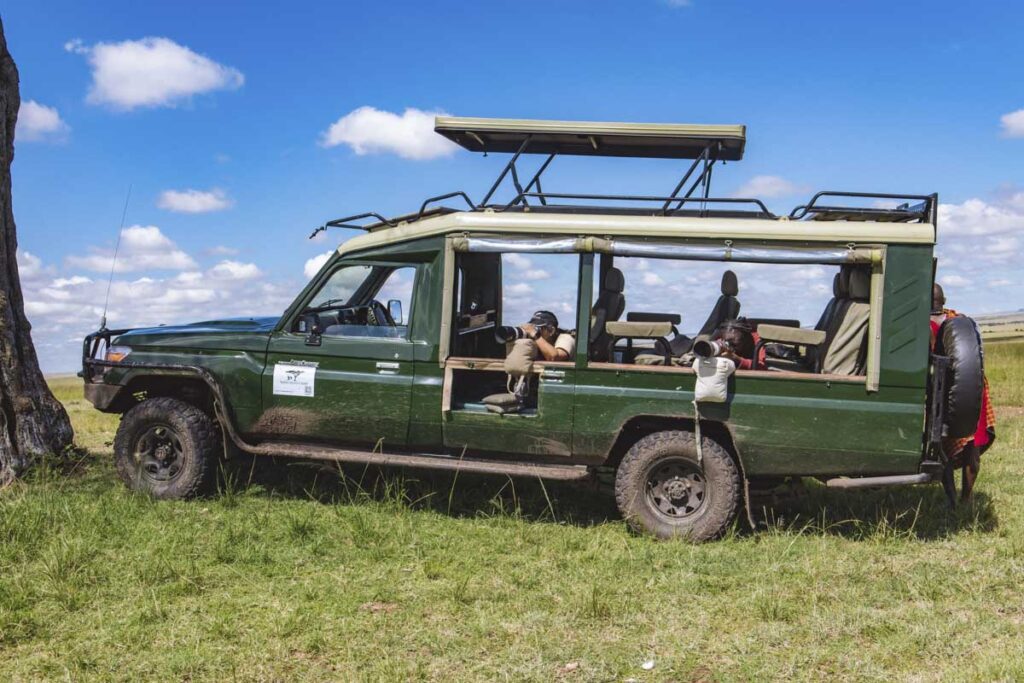
Lighting, Angles & Gear Tips
Capturing powerful wildlife photos on your Masai Mara photography tour is about more than just having the right subject—it’s how you see and shoot that subject that counts. Here’s my go-to approach when I’m in the field:
- Golden hours rule
Always aim to shoot around sunrise and sunset. The light is softer, shadows are longer, and the colors—especially against the Masai Mara skies—are breathtaking. - Side or backlighting for drama
Light from behind or the side adds a glowing rim to animals, especially on lions’ manes or elephant ears. It gives depth and mood that flat front light just can’t match. - ISO tips
Stick to ISO 100–800 for clean, sharp images. If light is low, only push higher when absolutely necessary to avoid grain. - Shutter speed matters
For movement (think a lion charging or elephant flapping ears), go 1/500s or faster. For portraits, you can ease off and play with depth of field. - Long lenses are your best friend
A 300mm lens is your minimum to photograph the Big Five without disturbing them. A 400–600mm lens will let you capture close-ups—like a leopard’s intense stare—from a safe, respectful distance. - Use the landscape
Don’t just focus on the animal. Use trees, grass, and branches to naturally frame your subject—it adds depth and storytelling. - Get low, stay connected
Shooting at eye-level—even from your seat or the vehicle floor—makes the animal appear more powerful and connects better with the viewer. No one bonds with a shot looking down at wildlife. - Track with AI focus
Set your camera to continuous or AI-Servo autofocus so you don’t lose sharpness during bursts of movement. - Zoom lens = versatility
A 100–400mm zoom lens is incredibly useful. Wildlife doesn’t always pose at the perfect distance, and being able to zoom in or out quickly lets you adapt to sudden moments.
And here’s the truth: you don’t need the world’s most expensive gear—you just need to know how to use it. With these lighting, angle, and gear tips, your Big Five Masai Mara photography tour will turn your memory card into a gallery of wild magic.
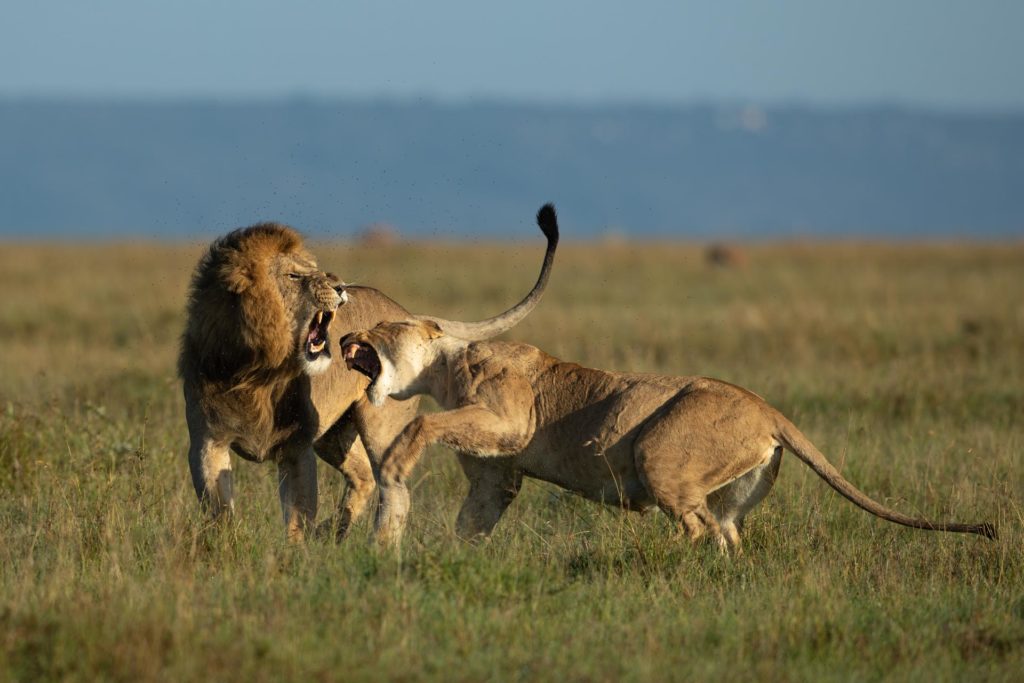
Lion Photography: Drama at Dawn & Dusk
There’s nothing like photographing a lion in the wild—especially when the golden light hits just right. During your Masai Mara photography tour, lions are often the stars of the show. Here’s how I approach shooting them, especially during those magic hours:
- Golden light is your best friend
Lions are most active during sunrise and sunset. That soft, warm light highlights their manes, textures, and moods beautifully. Look for moments when they’re yawning, stretching, or grooming—those in-between behaviors are gold. - Lock in on the eyes
The eyes tell the story. Whether it’s a resting female or a dominant male surveying the horizon, make sure the eyes are tack sharp. Use AF-S (single focus) for still moments or AF-C (continuous focus) if there’s movement. - Shoot the interactions, not just the poses
Lions in groups (especially prides with cubs) offer rich storytelling moments. Capture them playing, roaring, showing affection, or asserting dominance—this is the kind of imagery that sticks with people. - Get low for power
If you can shoot from a low angle—even from inside your vehicle—it changes everything. Shooting upward makes the lion appear more imposing and powerful. Frame it against the sky for a clean, striking background.
Lions offer some of the most emotionally charged photos you’ll take on any Big Five Masai Mara photography tour packages—so give them time, patience, and the right light, and they’ll give you cinematic results.

Leopard Photography: Camouflage Queens
Leopards are the most elusive of the Big Five—and easily the most rewarding to photograph. On any serious Masai Mara photography tour, spotting and shooting a leopard requires patience, timing, and a bit of luck. Here’s how I capture these masters of stealth:
- Look up—always
Leopards love perching in trees. Scan fig trees and sausage trees, especially during midday when they rest. Shooting from below gives you dramatic, cinematic angles—especially when they lounge on a thick branch or peer down from above. - Zoom wisely
You’ll likely be some distance away, so having a 400mm+ lens is crucial to frame the leopard tightly. If it’s in shade or backlit by sky, a fast lens (f/4 or lower) helps keep details crisp and focused. - Wait it out
Leopards are still and silent. They’ll lie motionless for an hour—then suddenly stretch, yawn, or leap. Keep your finger on the shutter and your camera ready. Those rare moments make the shot. - Go for the details
Not every shot has to show the whole animal. Zoom in on fur patterns dappled with sunlight, the flick of a tail, or a pink tongue after feeding. A 50–200mm zoom or macro lens works great for these intimate, artistic shots.
If lions are drama kings, leopards are silent movie stars—subtle, moody, and unforgettable. On your Big Five Masai Mara photography tour, capturing one well is a rite of passage.
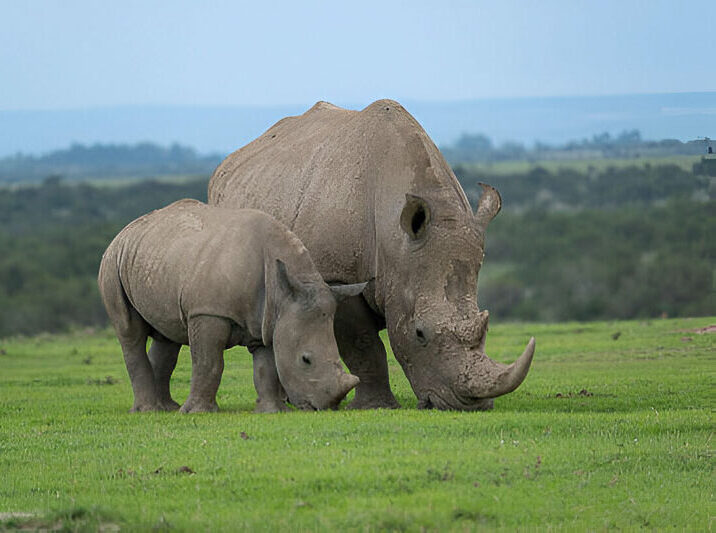
Rhino Photography: Majestic and Mysterious
Photographing rhinos on your Masai Mara photography tour is equal parts challenge and reward. They’re shy, heavily protected, and often hidden in dense bush or open plains. But when you spot one—especially a black rhino—it’s a moment you won’t forget. Here’s how I make the most of those rare sightings:
- Keep a respectful distance
Rhinos are powerful and unpredictable, especially black rhinos. Always stay inside the vehicle and follow your guide’s advice. Use longer lenses (300mm–600mm) to zoom in without disturbing them. - Shoot during soft midday light
While most wildlife is best captured at golden hour, rhinos can actually photograph well mid-morning or early afternoon. The light brings out the rugged textures of their thick skin and makes the curve of their horn pop. - Watch for sand wallows
Rhinos love rolling in dust to cool down and protect their skin. This behavior makes for dramatic photography—especially if you use a fast shutter speed (1/1000s or more) to freeze the motion of dust flying around them. - Go for the silhouette or profile
Their strong builds and iconic horns look amazing in profile. Try moving slightly to get a clean side shot—especially if you can frame the horn against the sky or a softly blurred background.
Capturing rhinos isn’t always easy, but when you do, it feels like winning a visual lottery. For your Big Five Masai Mara photography tour, it’s a moment that turns a great safari into a once-in-a-lifetime story.
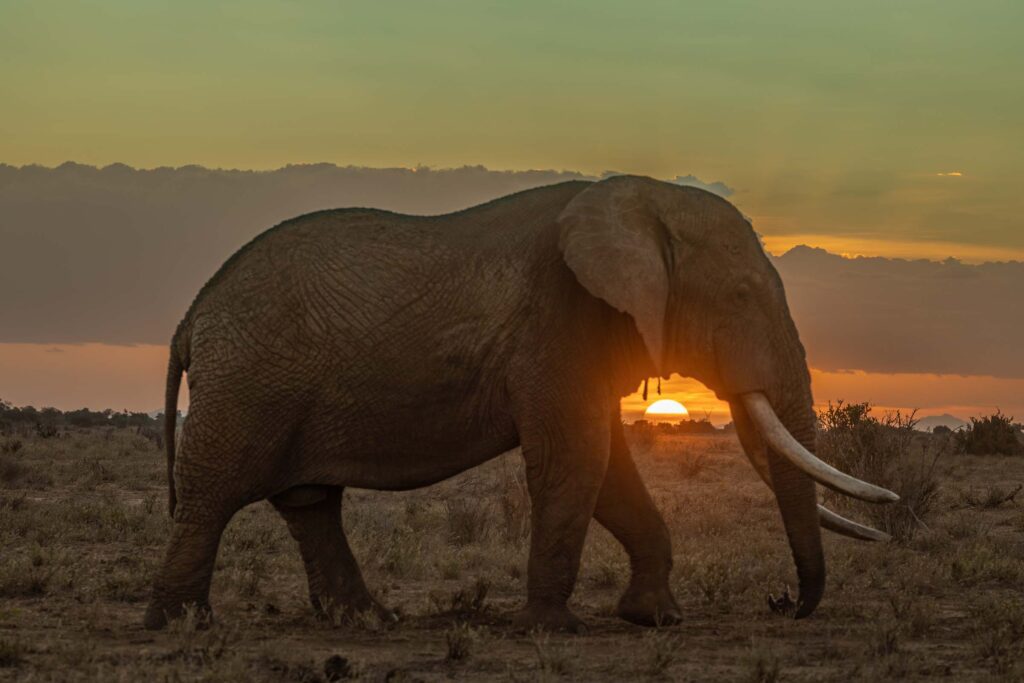
Elephant Photography: Gentle Giants in Action
On any Masai Mara photography tour, elephants are some of the most emotional and visually powerful subjects you’ll shoot. Their expressions, movements, and family dynamics offer endless storytelling moments—if you know what to look for.
- Golden hour herds
Early morning and late evening light casts a golden glow on the savannah, making elephant skin textures pop. Look for family groups grazing or moving together—the emotional bonds between mothers and calves are deeply moving on camera. - Freeze the action
Elephants may look slow, but their movements—like ear flaps, dust throws, or trunk sways—can be fast. Use a shutter speed of 1/500s or faster to capture detail in motion, especially when a herd kicks up dust or marches across plains. - Frame with foreground elements
Tall grass, scattered trees, or low shrubs in the foreground can create depth in your photo. Position your camera so that the environment becomes part of the story—it adds texture and realism. - Look for matriarch moments
The oldest female usually leads the herd. When you spot her guiding calves or pausing to assess the landscape, capture those shots—they say a lot about elephant society and leadership.
Whether it’s a lone bull against a stormy sky or a playful calf sticking close to its mother, elephants add emotion and drama to your big five Masai Mara photography tour. Their presence is humbling—and incredibly photogenic.
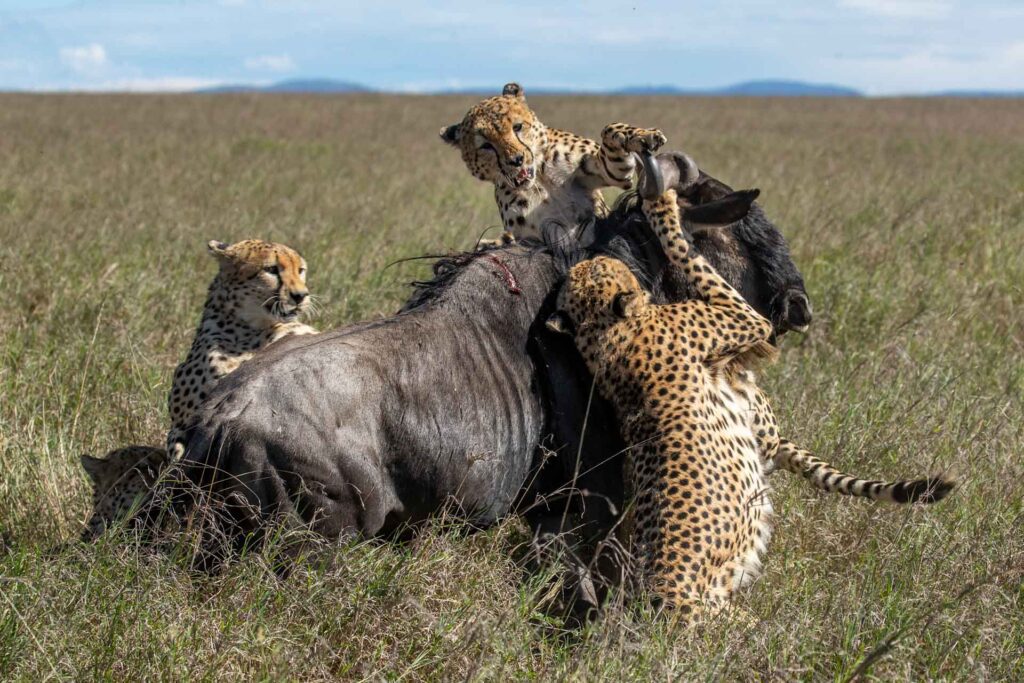
Buffalo Photography: Power and Personality
Buffalos may not be the most glamorous of the Big Five, but they’re undeniably striking—and full of character. On your Masai Mara photography tour, these rugged grazers offer powerful, gritty visuals that speak to the wild side of Kenya.
- Group shots for impact
A large herd moving across the plains makes for a dramatic scene. Try wide-angle shots to showcase the density, dust, and sheer mass of these animals. Shooting from a slight elevation (if available) helps reveal the herd’s structure. - Front-on power stances
If a buffalo locks eyes with you, don’t miss that shot. A straight-on image, especially with a slightly lowered head and raised shoulders, conveys intensity. Use AI or continuous autofocus tracking to keep the eyes and horns sharp in case of sudden movement. - Close-ups tell stories
Zoom in on individual faces—mud-caked horns, torn ears, battle scars, and expressive eyes all add personality to your images. These animals wear their lives on their hides. - Use contrast and side lighting
Early or late light casting from the side adds depth and definition, especially to their rugged features and curved horns. It creates separation from the background and draws focus to textures.
Photographing buffalos may not feel as thrilling as leopards or lions, but it delivers raw, powerful shots that enrich your Big Five Masai Mara photography tour collection. They’re unpredictable, tough, and deeply wild—perfect for storytelling through your lens.
Final Takeaway
A Big Five Masai Mara photography tour isn’t just a bucket-list trip—it’s a masterclass in storytelling through your lens. Success doesn’t come from the biggest camera or random luck. It comes from:
- Observing wildlife behavior
- Using the best light nature offers
- Knowing your angles and settings
- And above all, being patient and intentional
Every lion’s stare, every elephant’s step, every leopard’s yawn has a story—and you’re the one who gets to tell it.
So if you’re planning your next Masai Mara photography tour packages, bring your passion, prep well, and stay ready. The Mara always delivers—you just need to be there to frame it right.
Tip: Want a quieter, photographer-friendly stay close to prime wildlife zones? Mara Siligi Camp is a top pick—eco-conscious, peaceful, and right where the action is.
